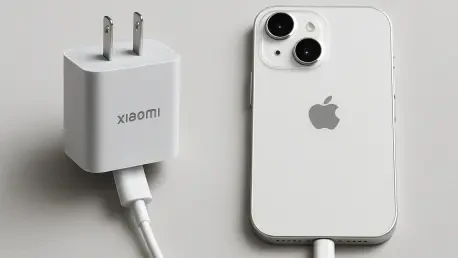In today’s tech landscape, consumers often seek to blend accessories from different brands with their primary devices, hoping to balance cost and functionality without sacrificing performance. Xiaomi, a company renowned for delivering innovative and budget-friendly products, presents an appealing array of accessories that catch the eye of iPhone users looking for alternatives to Apple’s premium-priced ecosystem. Spanning categories like audio devices, wearables, charging solutions, and smart home gadgets, Xiaomi’s offerings promise quality at a lower cost. Yet, the critical question remains: how effectively do these accessories integrate with Apple’s tightly controlled iOS environment? Compatibility across ecosystems is rarely straightforward, and iPhone users must navigate a maze of hardware capabilities and software limitations. This exploration delves into the successes and challenges of using Xiaomi accessories with iPhones, shedding light on where they excel and where they fall short, providing a clear guide for those considering a cross-brand tech setup.
Audio Devices: Sound Quality Meets Software Struggles
When it comes to audio accessories, Xiaomi’s lineup, particularly the Redmi Buds series, stands out for delivering impressive features like active noise cancellation and low-latency modes at a fraction of the cost of high-end competitors. For iPhone users, the initial pairing via Bluetooth is typically seamless, allowing for straightforward music playback and call handling without immediate hiccups. The hardware itself often feels robust, with sound quality that rivals more expensive options in the same price bracket. However, the experience starts to unravel when attempting to access the full range of features. The dedicated Xiaomi Earbuds app on iOS, which is essential for tweaking settings such as noise cancellation levels or gesture controls, frequently encounters issues like failure to recognize the device or sudden disconnections. This inconsistency means that many iPhone users are left with a stripped-down version of what the earbuds can offer, highlighting a significant gap between the hardware’s potential and the software’s execution on a non-native platform.
Diving deeper into the audio compatibility challenge, it becomes evident that the lack of polished iOS support is a recurring barrier for Xiaomi’s earbuds and similar devices. Even when the app functions, updates to firmware or customization of features like transparency mode can be unreliable, often requiring repeated attempts or troubleshooting to achieve the desired result. This frustration is compounded by the fact that basic Bluetooth functionality, while stable, doesn’t allow access to the advanced capabilities that make these products stand out in the budget category. For iPhone users accustomed to the seamless integration of Apple’s AirPods, this discrepancy can be a dealbreaker, especially for those who prioritize a fully configurable listening experience. The overarching lesson here is that while Xiaomi’s audio hardware holds its own in terms of design and raw performance, the software limitations on iOS often prevent users from unlocking the complete value of their purchase, leaving a sense of untapped potential.
Wearables: Fitness Features with Integration Hiccups
Xiaomi’s range of wearables, including the popular Smart Band and Redmi Watch series, aims to provide affordable alternatives to premium fitness trackers and smartwatches, boasting features like heart rate monitoring and sleep tracking. For iPhone users, there is some good news: basic health metrics can often sync to Apple Health through companion apps like Mi Fitness, offering a glimpse into daily activity data without much initial setup. This partial integration is a step in the right direction, making it possible to track steps or workouts directly alongside other health information on an iPhone. However, the process is far from flawless, as users frequently report delays in data syncing or incomplete transfers that require manual intervention. This lack of immediacy can disrupt the flow of monitoring fitness goals, particularly for those who rely on real-time feedback to adjust their routines or stay motivated.
Beyond the syncing challenges, Xiaomi wearables reveal further compatibility issues that can dampen the user experience with iPhones. Bluetooth connectivity often proves unstable, leading to dropped connections or notifications that fail to appear consistently on the device’s screen. Additionally, for models running Wear OS, such as certain higher-end Xiaomi watches, compatibility with iOS is entirely absent due to platform restrictions, rendering these devices unusable for Apple users. This stark contrast within the wearable lineup underscores the importance of researching specific models before making a purchase decision. While the hardware quality and feature set of Xiaomi’s wearables are often commendable for the price, the inconsistent integration with iOS means they fall short of the polished experience provided by Apple’s own Watch. For iPhone users, these accessories might serve as a budget-friendly stopgap, but they come with trade-offs in reliability and ease of use that could frustrate those expecting a seamless connection.
Charging Solutions: A Seamless Cross-Platform Success
Shifting focus to charging accessories, Xiaomi emerges as a clear winner for iPhone users seeking reliable and cost-effective power solutions. Products like USB-C wired chargers and Qi-certified wireless charging pads adhere to universal standards such as Power Delivery, ensuring fast and efficient charging without compatibility concerns. A typical 30W Xiaomi charger can boost an iPhone’s battery to 50% in roughly 30 minutes, delivering performance on par with Apple’s official offerings at a significantly lower price point. This adherence to widely accepted protocols means that there’s no need for proprietary software or apps, eliminating the integration headaches seen in other categories. For users frustrated by the high cost of branded charging gear, Xiaomi’s options provide a refreshing alternative that doesn’t compromise on speed or safety.
Moreover, the versatility of Xiaomi’s charging solutions extends to their wireless offerings, which work effectively with iPhones supporting MagSafe technology, even if they don’t achieve the maximum speeds reserved for Apple-certified products. This near-flawless interoperability is a testament to the power of universal standards in bridging ecosystem gaps, allowing iPhone users to confidently invest in Xiaomi chargers without worrying about quirky limitations or setup complexities. The lack of reliance on app-based configuration further enhances their appeal, as the plug-and-play nature of these accessories ensures immediate functionality out of the box. This category stands as a beacon of what cross-platform compatibility can achieve when hardware design prioritizes open protocols over ecosystem-specific features, offering iPhone users a practical and economical way to keep their devices powered up without breaking the bank.
Smart Home Products: Navigating Ecosystem Challenges
Xiaomi’s expansive smart home portfolio, encompassing everything from lighting solutions to robotic vacuums, presents a nuanced compatibility picture for iPhone users. Direct support for Apple HomeKit remains limited to only a handful of devices, creating a barrier for those deeply embedded in Apple’s smart home framework. However, the emergence of Matter, a universal standard for smart home connectivity, offers a promising workaround through Xiaomi hubs that facilitate integration with iOS environments. Additionally, the Xiaomi Home app, available on iOS, provides a functional platform for controlling most devices, though its advanced automation features tend to perform optimally within Xiaomi’s native ecosystem. For users willing to adapt their setups, these options can unlock a decent level of functionality despite the initial hurdles posed by differing ecosystem priorities.
Exploring further, the evolving landscape of smart home standards suggests a brighter future for Xiaomi’s compatibility with iPhones. As Matter gains traction, the potential for seamless cross-platform control grows, reducing the friction currently experienced by iPhone users attempting to incorporate Xiaomi products into their homes. While setting up a Matter-enabled hub or relying on the Xiaomi Home app may require extra effort or investment, it can yield a cohesive experience for managing diverse devices under one system. This adaptability is key for users with mixed ecosystems who don’t want to be locked into a single brand’s offerings. Although Xiaomi’s smart home gear isn’t fully optimized for Apple’s environment yet, the ongoing shift toward universal protocols indicates that these products are becoming increasingly viable for iPhone users, provided they’re prepared to navigate some initial configuration challenges to achieve a tailored smart home setup.
Broader Patterns in Cross-Ecosystem Performance
Looking across the spectrum of Xiaomi accessories, a distinct trend surfaces for iPhone compatibility: products shine brightest when they operate on universal standards, as seen with charging solutions, but often stumble when reliant on software integration, as evident in audio devices and wearables. The hardware quality frequently exceeds expectations for the price, showcasing Xiaomi’s knack for delivering value-driven design that can compete with pricier alternatives. Yet, the absence of iOS-optimized apps or consistent connectivity often caps the user experience, leaving advanced features inaccessible or frustratingly unreliable. This variability underscores that compatibility isn’t uniform—it hinges on the specific product and whether its core functionalities depend on open protocols or deep ecosystem synergy, a critical consideration for iPhone users evaluating these accessories.
Expanding on this observation, the disparity in performance across categories highlights a broader challenge in cross-ecosystem tech adoption. Xiaomi’s strength lies in leveraging widely accepted standards to ensure baseline functionality, which works well for straightforward applications like charging. However, in areas requiring nuanced software support, such as customizable audio settings or real-time wearable data, the lack of tailored iOS integration becomes a noticeable drawback. This pattern suggests that while Xiaomi accessories can serve as compelling alternatives for cost-conscious iPhone users, the trade-off often involves sacrificing the seamless polish that Apple’s native products provide. Understanding this balance between affordability and functionality is essential, as it shapes expectations and helps users prioritize which categories of Xiaomi products are worth exploring based on their specific needs and tolerance for potential software limitations.
Actionable Guidance for Smart Purchases
For iPhone users considering Xiaomi accessories, a strategic approach can make all the difference in navigating the compatibility landscape. Charging solutions stand out as a safe bet, offering near-guaranteed performance and excellent value without the risk of integration issues, making them an ideal starting point for cross-brand experimentation. Smart home products show potential, especially with evolving standards like Matter, though they may require additional hardware or setup effort to align with an iPhone-centric ecosystem. Caution is advised with audio devices and wearables, where software constraints on iOS can limit access to advanced features, often reducing these products to basic functionality. Researching specific models for known compatibility quirks is a prudent step before committing to a purchase in these trickier categories.
Building on this advice, it’s worth emphasizing the importance of aligning expectations with the intended use of Xiaomi accessories. For those who prioritize cost savings over cutting-edge features, many of Xiaomi’s offerings can still deliver satisfactory results, particularly in areas governed by universal protocols. However, users who depend on deep customization or real-time integration with iOS should temper their expectations and perhaps look to Apple’s ecosystem for a smoother experience, even at a higher price. Digging into user reviews and technical specifications can provide clarity on whether a specific Xiaomi product will meet critical needs without frustrating workarounds. By focusing on categories with proven cross-platform success and approaching others with informed caution, iPhone users can make savvy decisions that balance budget considerations with practical usability in their daily tech interactions.









